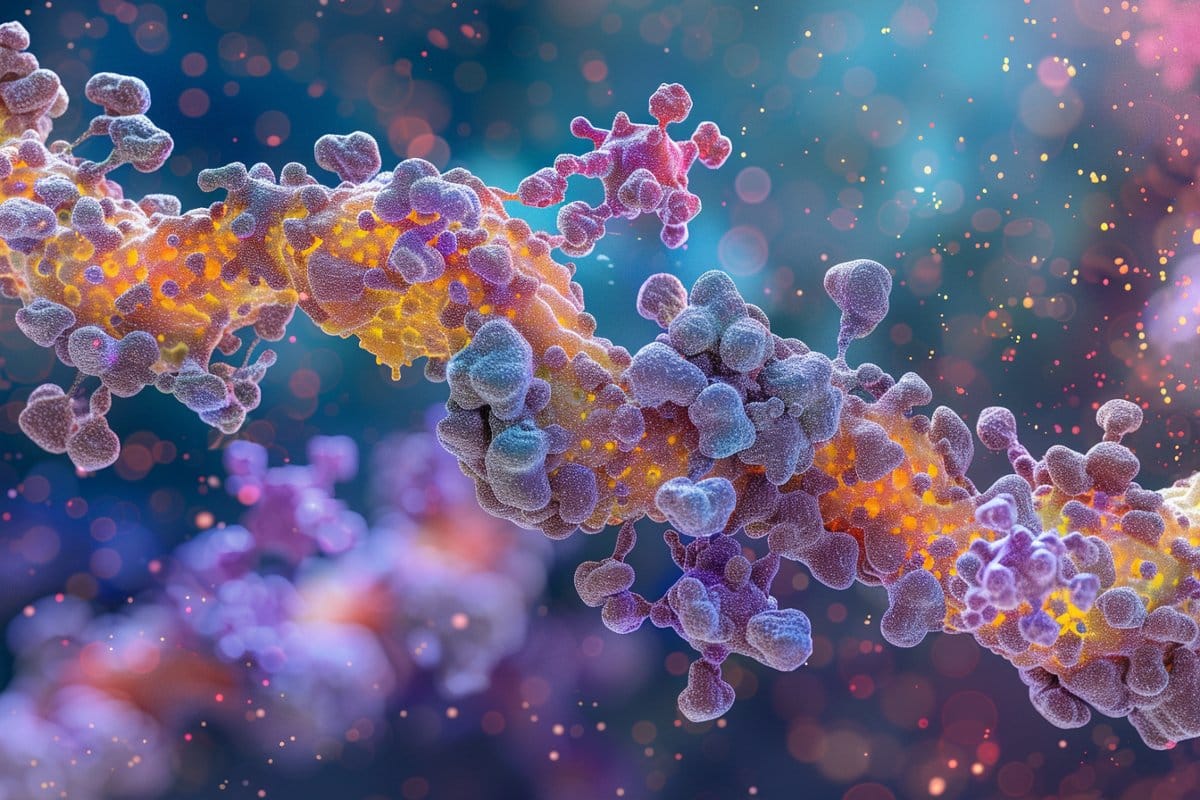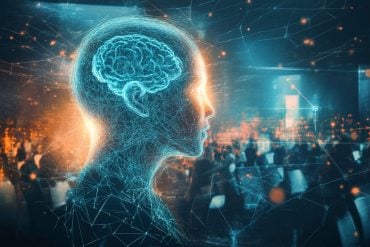Summary: A groundbreaking study introduces a novel hypothesis that Amyloid Precursor Protein (APP), known for its role in Alzheimer’s disease (AD), is crucial for the mechanical integrity of synapses through its interaction with talin, a synaptic scaffold protein. It proposes that the misprocessing of APP disrupts mechanical signaling pathways, leading to synaptic degeneration and memory loss, thereby contributing to the progression of AD.
The research suggests a shift in Alzheimer’s treatment towards targeting the mechanical aspects of synapse function, potentially revolutionizing therapeutic strategies. Rigorous experimental validation is needed to explore this new avenue for APP research and its implications for combating Alzheimer’s disease.
Key Facts:
- APP and talin interaction is identified as a mechanism for mechanically coupling the cytoskeletal machinery to synaptic sites, ensuring synaptic integrity.
- The study posits that alterations in the mechanical signaling pathway of APP processing lead to Alzheimer’s disease pathology, including synaptic degeneration and memory loss.
- It introduces a novel therapeutic approach by suggesting the repurposing of drugs that stabilize focal adhesions, aiming to restore mechanical homeostasis at synapses and slow the progression of Alzheimer’s disease.
Source: Neuroscience News
The battle against Alzheimer’s disease (AD), a devastating neurodegenerative disorder characterized by memory loss and cognitive decline, has been long and fraught with challenges. Central to this battle is the quest to understand the underlying mechanisms that lead to the disease.
A groundbreaking study has shed new light on these mechanisms, proposing a revolutionary hypothesis that places the Amyloid Precursor Protein (APP) at the heart of a novel mechanical signaling pathway in the brain.

This insight not only paves the way for rethinking Alzheimer’s pathology but also opens up new avenues for therapeutic interventions.
The Mechanical Role of APP in Neuronal Health
At the core of this research is the identification of APP, a protein previously known mainly for its role in the generation of amyloid-beta (Aβ) peptides, as a key player in the mechanical integrity of synapses. Synapses are the vital junctions through which neurons communicate, and their proper functioning is crucial for memory formation and maintenance.
The study introduces the concept of APP forming an extracellular meshwork that acts as a mechanical bridge between the pre- and post-synaptic compartments, facilitating not just communication but also the mechanical stability of the synaptic structure.
APP and Talin: A Mechanical Coupling
A striking discovery of the research is the direct interaction between APP and talin, a synaptic scaffold protein.
This interaction links the cytoskeletal machinery—which provides structural support within the cell—to the plasma membrane at synaptic sites via APP.
This coupling mechanism is likened to a mechanical handshake that ensures the synaptic integrity and efficient transmission of signals across the synapse.
Hypotheses: From Mechanical Signaling to Alzheimer’s Pathology
The study proposes six compelling hypotheses that together form a coherent theory of how disruptions in this mechanical signaling pathway could lead to Alzheimer’s disease:
- Extracellular Meshwork Mechanism: APP’s role in forming an extracellular meshwork is fundamental for the mechanical coupling of synapses.
- Mechanical Signaling Pathway: The processing of APP is part of a mechanical signaling pathway that maintains synaptic integrity.
- Mechanical Basis of Alzheimer’s Disease: Misprocessing of APP, due to altered mechanical cues, disrupts this pathway, leading to the synaptic degeneration observed in Alzheimer’s.
- Memory Loss as Mechanical Corruption: The corruption and loss of mechanical binary data within the synapse could explain the memory loss associated with Alzheimer’s.
- Propagation of Disease through Mechanical Collapse: The spread of Alzheimer’s may be driven by the collapse of this mechanical homeostasis, propagating through neuronal networks.
- Therapeutic Potential: The possibility of repurposing drugs that stabilize focal adhesions to restore mechanical integrity at synapses, offering a novel approach to slow the progression of Alzheimer’s.
Implications and Future Directions
This theory introduces a paradigm shift in our understanding of Alzheimer’s disease, suggesting that the battle against this condition might be fought not only on the biochemical but also on the biomechanical front.
The hypotheses put forth by the research underscore the complexity of synaptic functions and the intricate balance that must be maintained to prevent neurodegeneration.
To move forward, rigorous experimental validation in both neuronal models and patients is essential. The promise lies not only in validating these hypotheses but also in exploring the therapeutic potential of targeting mechanical signaling pathways.
The focus on mechanical aspects of synapse function opens up a previously unexplored area for APP research, with the potential to revolutionize Alzheimer’s treatment.
In conclusion, this study represents a significant leap forward in our understanding of Alzheimer’s disease, highlighting the crucial role of mechanical signaling in neuronal health and disease.
By proposing a novel mechanism through which APP contributes to synaptic integrity and memory, it offers new hope for the development of innovative therapeutic strategies to combat this relentless disease.
Thanks to Benjamin T. Goult for sharing this research with Neuroscience News.
About this neuroscience and Alzheimer’s disease research news
Author: Neuroscience News Communications
Source: Neuroscience News
Contact: Neuroscience News Communications – Neuroscience News
Image: The image is credited to Neuroscience News
Original Research: Closed access.
“The structure of an Amyloid Precursor Protein/talin complex indicates a mechanical basis of Alzheimer’s Disease” by Benjamin T Goult et al. BioRxiv
Abstract
The structure of an Amyloid Precursor Protein/talin complex indicates a mechanical basis of Alzheimer’s Disease
Misprocessing of Amyloid Precursor Protein (APP) is one of the major causes of Alzheimer’s disease. APP is a transmembrane protein comprising a large extracellular region, a single transmembrane helix and a short cytoplasmic tail containing an NPxY motif (normally referred to as the YENPTY motif).
Talin is a synaptic scaffold protein that connects the cytoskeletal machinery to the plasma membrane via binding to one of two highly conserved NPxY motifs in the cytoplasmic tail of integrin transmembrane receptors.
Here we report the crystal structure of an APP/talin complex identifying a new way to couple the cytoskeletal machinery to synaptic sites via APP. Structural modelling reveals that APP forms an extracellular meshwork that mechanically couples the cytoskeletal meshworks of both the pre-, and post-synaptic compartments.
In this context, we propose APP processing as a mechanical signalling pathway with similarities to Notch signalling, whereby the cleavage sites in APP represent mechanical sensors, with varying accessibility to cleavage by secretases.
During synaptogenesis in healthy neurons, the APP/talin linkage would provide an exquisite mechanical coupling between synapses, with tightly controlled APP processing providing instructions to maintain this synchrony.
Furthermore, APP directly coupling to the binary switches in talin indicates a role for APP in mechanical memory storage as postulated by the MeshCODE theory.
The implication that APP is a regulator of mechanical signalling leads to a new hypothesis for Alzheimer’s disease, where mis-regulation of APP dynamics results in loss of mechanical integrity of the synapse, corruption and loss of mechanical binary data, and excessive generation of the toxic plaque-forming Aβ42 peptide. In support of this model, we show that talin1 depletion has a dramatic effect on APP processing in cells.
Much needs to be done to experimentally validate this idea, but we present here a novel theory of Alzheimer’s Disease with a role for APP in the mechanically coded binary information storage in the synapse, which identifies a potential novel therapeutic strategy for treating Alzheimer’s Disease.






